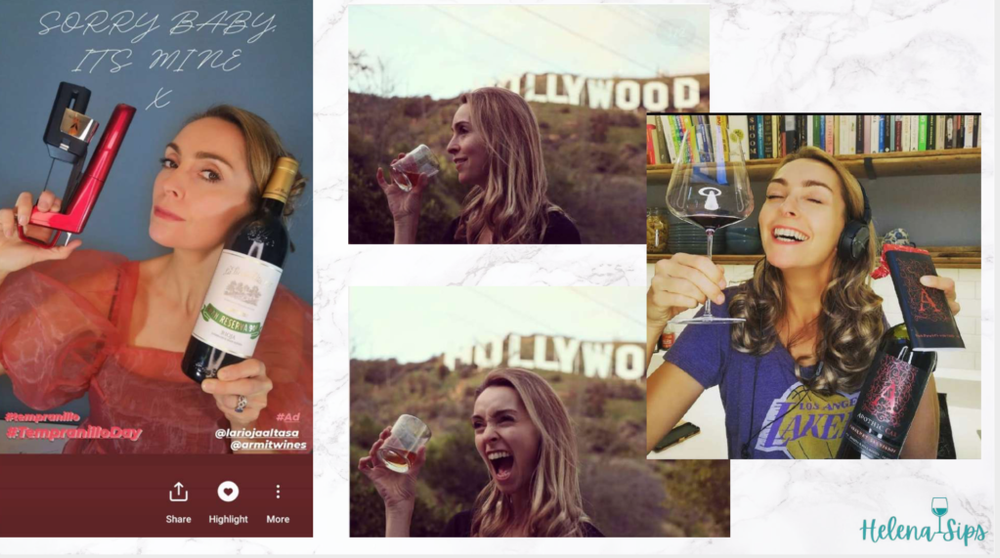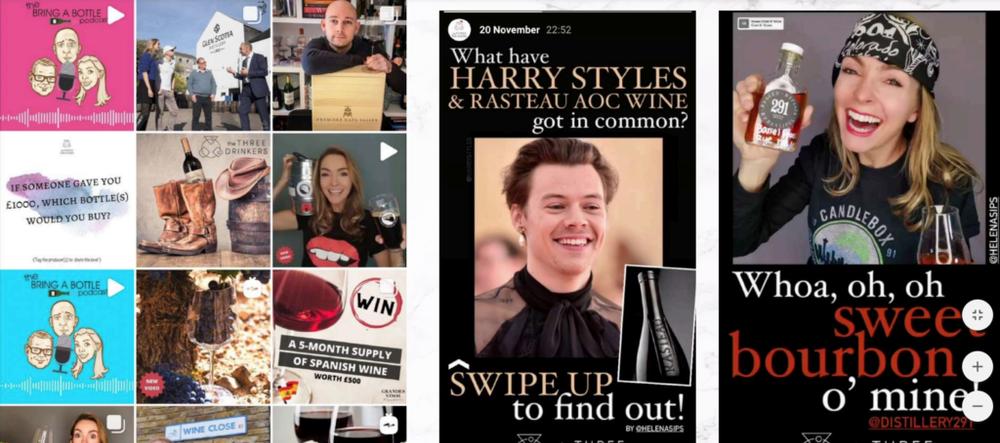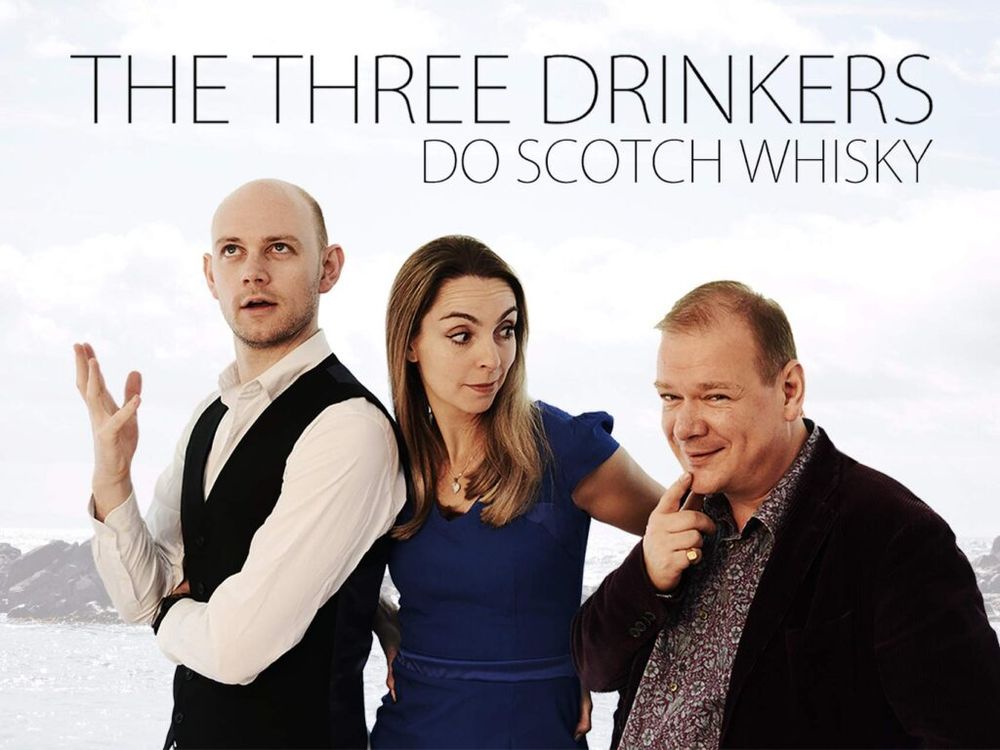‘Getting Heard in the Digital Noise’ has become a challenge for any drinks or wine business as the recent Bordeaux Means Business webinar looked to tackle.
(Click here to watch the full Bordeaux Means Business webinar)
https://ecoleduvindebordeaux.ubicast.tv/videos/getting-heard-above-the-digital-noise-031220/#share
Introduction by Richard Siddle
If you are going to have any chance of being heard in all the digital noise – that this panel looked to address – then you have to get one thing right. What is the main message you want to say about your brand or your business? Get that right and the rest of your social media campaigns should bring you success.
At least that’s the theory and it was also the number one message that each of the three panelists in the recent Bordeaux Means Business webinar repeated time and again. Joining Helena Nicklin was Yannick Oudin of Favoreat Design, a digital and social media agency that works with the Bordeaux Wine Council (CIVB), and Basile Tesseron owner of Bordeaux producer, Château Lafon-Rochet.
The hard part is working out what that single message is, what is it about your business, your brand that gives you a purpose, a reason for living, the central factor that your target customers can place their trust in. To do that you need to know who your target audience is, which demographic group you are you trying to talk to and focus all your activity around them.

Chateau Lafon Rochet is now building up a successful Instagram following with photos that tell the story of the winery
Basile Tesseron was open enough to admit it can be a costly mistake to get wrong, as he had wasted close to €100k on a YouTube campaign that only got 1,000 views. But it equally taught him what he needed to do to get things right. He needed to be genuine, personal and tell stories about their life in the winery and out in their vineyards. Stories told through photos and videos largely on Instagram which are gradually building up a sizeable and engaged following.
A brand message built around trust can pay huge dividends, stressed Oudin, with increased repeated purchases, loyalty and recommending you to their peers. To build that trust you need to be “humble, show empathy and interact with your community”.
For Helena Nicklin it really is about knowing your audience and putting them up front and central in everything you do. What is it they like to do and where can your brand, your personality and your brand credentials fit into that. How you can work with the right influencers who are already deeply connected to those audiences to help share and tell your story for you. But she can explain all that far better in her own words… so take it away Helena.
Helena Nicklin
What I’ve learned about social media & dos and don’ts of working with influencers.
This year marks my seventeenth year in the wine trade, where my focus has always been firmly on the consumer. From working the shop floor in my first wine job to being part of the commercial wine buying team at a well-known merchant, writing articles and running private and corporate tastings. I’ve spoken and written about wine over all sorts of platforms from TV and radio to newspapers, magazines, websites and of course, social media. During that time, I’ve had to think on my feet, constantly judging my audience’s knowledge levels and adapting my style to match. Let me share with you some of what I’ve learned over the years about what I’ve seen working in the digital space, especially, social media.
Why market on social media?

Helena Nicklin has been able to use Instagram to really express her own personality
Social media marketing is still in a funny place when it comes to the wine trade. Many brands are well aware they need to be on there, but it is still so alien to many. There are however four billion reasons why your brand needs to be on social media (that’s how many people are, by the way).
The big platforms for brands are Instagram and Facebook. Pinterest is a surprise contender that is so often ignored and the likes of TikTok and WeChat are sneaking up pretty quickly. Over 1 billion people use Instagram monthly however and over 500 million use it a day. They’re spending nearly an hour a day on there too – that’s lots of time to see content and ads.
The potential for brands is huge when you consider that data from Facebook (who own Instagram) show us that 50% Instagram users follow brands and that Instagram helped 80% of users make buying decisions over the last year. So in short, if your target demographic is 35 and under, Instagram is a gold mine. The split is virtually even between male and female users too.
One reason influencer content on these platforms has been so effective is because as user generated content, it reads very differently to straight ads, so action is far more likely to be taken. It’s worth noting also that in 2019, over one quarter of internet users were using ad blockers, so even your target audience may well be missing your message. What else though, can influencers bring to the table?
What influencers bring
Audience & Insight: It perhaps should go without saying, but influencers bring a ready-made audience that in many cases, has taken a very long time to build. Importantly, they should also be able to offer insight to that audience. I know, for example, through my years of engaging with mine that they want bite-size, memorable, entertaining facts. They don’t want to be bogged down with detail; they get turned off by it, associating too much geekery with fuddy-duddies they don’t want to be. Instead, they want enough information to deliver some interesting facts about their wine choices at the dinner table and remember what they like to drink. I can talk them up and talk them down in terms of price point too, to a certain degree.

Brands need to work with and trust influencers to get the right stories and images about their brands over to their audiences, says Nicklin
We need to constantly engage, read and respond to our audiences to gain insight into how they are feeling and what makes them tick. Ask your influencer what insight they have from their audience.
Mine for example, like everyone around the world I’m sure, are clearly feeling two things right now: 1) in need of comfort and reassurance and 2) overwhelmed for choice about just about everything in life.
In our world of wine and food, one simple word could be the answer here for both those challenges: Bordeaux. Bordeaux as the one, reassuring choice for wine gifts, for food matching and good times. It could be the ‘safe word’ in wine. A region like Bordeaux can do this because of its heritage, so why not try leveraging that heritage while making sure the language is right for the audience? This is just one example of why communication with your influencer could potentially give you a whole marketing plan. You can have that one on me, Bordeaux!
Authenticity & Personality
I’ve learned the hard way that my audience prefers me and my Three Drinkers colleagues when we are authentic, which generally means a bit left field, dressing up the dog and so on. I know this because when we walk away from that personality and get too ‘tradey’ and serious, our audience responds. Or rather, it doesn’t. Audiences want personality. They don’t want to be sold to. Influencers can offer a ready-made, authentic personality that brands can essentially borrow.

The Three Drinkers have learnt their audience don’t want to be spoken to as they are members of the drinks industry, says Nicklin
Credibility: Genuine influencers have earned credibility that is often easy to see – or not see. By working with credible people, brands can benefit from the halo effect of that too.
Backlinks: Anything linking back to your website externally will be great for your SEO, be it a swipe up, a bio link from social media or back link in blogs and e-zines.
You should treat your social media like you would a big budget TV advert. It may not be as expensive, but it will be just as time consuming to get it right. In advertising terms, your influencer will be your planner, your creative and your media partner. When you look at it like that, it can actually be very good value indeed.
Working with influencers: How it works and finding the right one
Not all influencers are the same. Some come from writing and communications backgrounds and have found themselves on social; others have started on social and found their subject. Either can be right for you, but take your time matching your choice with your desired audience and style. If your influencer can’t tell you exactly who their audience is though and what they want, don’t use them.
Segment your influencers to your audiences: Bordeaux, for example, will have several audiences; it won’t be one size fits all. Will the same people buying Calvet Crémant de Bordeaux for £10 in the supermarket be the same as those buying cases en primeur, for example? Maybe, but probably not.
Segment your products to your audiences and therefore, your influencers. While we’re at it, don’t forget to really think about occasions too. Are the people buying the wine the same as the ones who will be drinking it? For example, if you want to promote Margaux for Father’s Day, don’t market it to fathers. Appeal to the mothers and the (grown up) children of those fathers.
Do your research
Are you happy with the associations that may come from working with these people? Have you missed any potentially politically incorrect behaviours? Sexism? Trolling? Bullying? You don’t want your brand tarnished without your even realising it. Be wary also of those where every post is sponsored too. Decent influencers really should have a good mix of paid and unpaid posts. Too many sponsored posts and followers will start to disengage.
Communicate
Have the conversation about an influencer’s intentions with them before they post. I had to ask someone recently if they minded me and my colleague Aidy Smith dressing up in dodgy fancy dress to make a point about grape personalities. They were fine with it – loved it even, but it would have been a bit of a shock had they not been prepared for it.
Trust
This is the big one. If you’ve done your due diligence, then let your influencer talk to their audiences in the way that they know will have the most effect. Leave your ego at the door. This is where experienced writers and communicators come into their own as they will know how to translate what’s needed; they know enough to know what to leave out. An important skill that too many people ignore.
How to approach influencers for work
This is still a grey area as the industry is so new and there’s a real mix of hobbyists and professionals out there – and everything in between! It’s fine to test the water as some will be only too delighted to work for free in exchange for some nice samples. Some however, will need a little more. Here’s what I would like to tell brands and PRs about how to work with influencers. Obviously, this is all just my own opinion from my own experience, so do bear that in mind:
- Be up front about what you need if there really is a clear brief.
- The more prescriptive you want to be, the more likely it is you should be paying people.
- Be clear what’s on offer – whether it’s the sample itself and / or money.
- Appreciate that setting up writing articles, photography and scripting, filming and editing videos takes valuable time. Is there a reason why they should be promoting your brand for free? Man cannot live on wine alone, although believe me, I have tried…
- It’s still totally ok to float the idea of talking about your product for editorial purposes (i.e. for free). If I find something genuinely interesting, I will ask for a sample and talk about it anyway but I won’t follow a hundred rules about what I need to say and do; that would need to become a paid-for campaign that we discuss.
- If you really want the influencer to work with your brand and they’ve said no to doing it for free, it’s very much OK to come back and say that there might be some budget for it. Everyone is finding their feet with this.
- Don’t be offended if you don’t see coverage for something that you sent unsolicited. Many of us, especially at this time of year, get sent A LOT of samples. There’s usually a huge backlog to taste and quite often, amazingly, a plan for how to do that and what the coverage will be.
Tips for increasing Your following

Here’s what I’ve learned over the past couple of years about increasing following:
- Engage with your audience constantly. Reply to comments, follow hashtags and comment on people’s posts who aren’t following you – quite often they’ll take a look and follow you.
- Post regularly – at least once a day.
- Make your brand personality shine (or borrow it).
- Be accessible – social media is about being open and available for conversations.
- Competitions help boost numbers and the bigger the prize, the more alluring it will be. In order to keep the followers after the deadline however, your prize must be relevant to you and the audience you want to engage with.
- Get to 10,000 followers on Instagram to enable the swipe up function. Very useful to linking back to articles and websites from stories.
- Use #Hashtags. See which ones are out there and already in use.
- Use questions, quizzes and polls frequently to get your insight and make your audience feel loved.
- Note that you don’t need sexy editing and loads of flashy text. Simple is better for social.
- Note that faces (and animals!) almost always do better than straight bottle shots.
- Note that videos get fewer likes and comments as people don’t go back to the profile just to like after watching usually. It’s just the way it is.
- For my final point, try things out! There are different audiences out there on lots of different platforms. Experiment with your delivery. You may be pleasantly surprised. This social media madness is only going to go one way, so strap yourself in and enjoy the journey.
- You can follow Helena Nicklin on social media at @HelenaSips and go to her website at helenanicklin.com and thethreedrinkers.com.










































